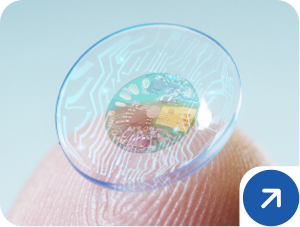Pink eye is often associated with childhood infections, but anyone can get it. If you’ve woken up with red, itchy eyes or someone in your household has developed tell-tale redness, you’re likely wondering, “Is this pink eye? And do I need to see a doctor?”
Fortunately, most cases of pink eye will resolve themselves with rest, time, and at-home remedies. However, it may be worth seeing an eye doctor if you have severe symptoms, if your symptoms don’t improve after a few days, or for a bacterial infection (since antibiotics can significantly help the healing process).
What Is Pink Eye?
Pink eye, or conjunctivitis, is the inflammation of the conjunctiva—the thin, transparent layer that lines your eyelids and covers the white part of your eye. It’s most commonly recognized by the red or pink hue it gives to the affected eye.
While pink eye is a fairly common condition, especially among children, college students, and those in close-contact environments, the cause can significantly impact how it’s treated.
Symptoms & Causes of Pink Eye
Pink eye symptoms vary slightly depending on the type. Here’s a quick breakdown:
- Redness: Found in all types of pink eye, making the eye appear red or pink.
- Discharge: Bacterial pink eye causes thick discharge, while viral and allergic types usually result in watery eyes or no discharge.
- Itchiness or irritation: Common in viral and allergic pink eye.
- Swelling: Frequently seen in allergic conjunctivitis.
Causes range from bacterial or viral infections to allergen exposure and, in some cases, irritants like smoke or chlorine pools.
Types of Pink Eye
Not all pink eye is created equal. There are 3 main types of conjunctivitis:
- Bacterial pink eye: This type is often caused by bacteria such as Staphylococcus aureus or Streptococcus pneumoniae and usually results in thick, yellow, or green discharge, crusty eyelashes, and significant redness.
Bacterial pink eye typically clears up in 3–5 days with antibiotics or 7–10 days without.
- Viral pink eye: Often linked to a virus like a cold-causing adenovirus, viral conjunctivitis can spread quickly in schools or crowded environments. Symptoms include watery discharge, itchiness, and mild to moderate redness.
Viral pink eye typically resolves within 7–14 days but may take up to 3 weeks for more severe cases.
- Allergic pink eye: This type, triggered by allergens like pollen, dust, or pet dander, typically affects both eyes and is accompanied by itchiness, swelling, and excessive tearing.
Allergic pink eye typically disappears once exposure to allergens ends or with antihistamine treatment.
Identifying the type of pink eye you or your child has is the first step in determining whether medical care is necessary. If symptoms persist beyond these timeframes, consult a healthcare professional.
How Do You Know if Pink Eye Is Bacterial or Viral?
Distinguishing bacterial pink eye from the viral pink eye is crucial for treatment. The key differences are:
- Bacterial pink eye is characterized by a thick discharge that makes it difficult to open one’s eyes in the morning. It is often isolated to 1 eye but can spread to the other.
- Viral pink eye is typically accompanied by other cold-like symptoms (e.g., sore throat and runny nose). This type produces a watery discharge that spreads more readily between the eyes.
Observing your symptoms—or your child’s—can help you determine what is causing the issue.
Is It OK to Leave Pink Eye Untreated?
It is safe to allow pink eye to heal independently for certain types. Viral conjunctivitis, for example, often resolves without complications within 1 to 2 weeks. Similarly, allergic pink eye typically improves by reducing exposure to allergens and using over-the-counter antihistamines.
However, bacterial pink eye is a different story. Untreated bacterial infections, such as corneal infections, can lead to more severe eye issues. Seek medical attention if the symptoms persist or worsen or result in significant pain or vision changes.

How to Treat Pink Eye at Home
If you’ve determined that your pink eye is mild and doesn’t require a doctor’s visit, these home remedies can help relieve symptoms:
- Clean your eyes daily: Use a clean, damp cloth to remove crust or discharge gently.
- Cold or warm compress: A cold compress can ease swelling and itchiness in viral or allergic pink eye, while a warm compress alleviates bacterial-related discomfort.
- Avoid contact lenses: Switch to glasses while you recover to prevent irritation.
- Artificial tears: These over-the-counter eye drops can soothe dryness or itchiness.
- Allergy remedies: Use antihistamine drops if allergic conjunctivitis is the issue.
When Do I Need to See a Doctor?
Sure signs and symptoms that indicate it’s time to schedule an appointment with your doctor include:
- Severe eye pain
- Sensitivity to light
- Blurred or reduced vision
- Persistent redness lasting over 10 days
- Yellow or green discharge that doesn’t improve
Medical Remedies for Pink Eye
Your doctor may recommend one of the following treatments based on the type of pink eye:
- Antibiotics for bacterial pink eye: A short course of antibiotic eye drops or ointments can quickly clear up the infection.
- Antiviral medications for viral pink eye: Antivirals are rarely required but are prescribed in severe cases, such as those caused by herpes.
- Steroid drops for allergic pink eye: These reduce severe inflammation in allergic conjunctivitis.
Do You Really Need Antibiotics for Pink Eye?
Not always. Antibiotics are only necessary for bacterial infections and do not help treat viral or allergic pink eye. Overprescribing antibiotics can contribute to antibiotic resistance, so it’s best to use them only when prescribed by a professional.
Take Care of Pink Eye the Right Way
Pink eye may be common, but addressing it appropriately based on its cause is still important. West Coast Optical strives to put you and your family first so you can recognize red flags for serious infections and know when to seek professional help. Contact us today to speak to a professional and receive peace of mind about your pink eye.















